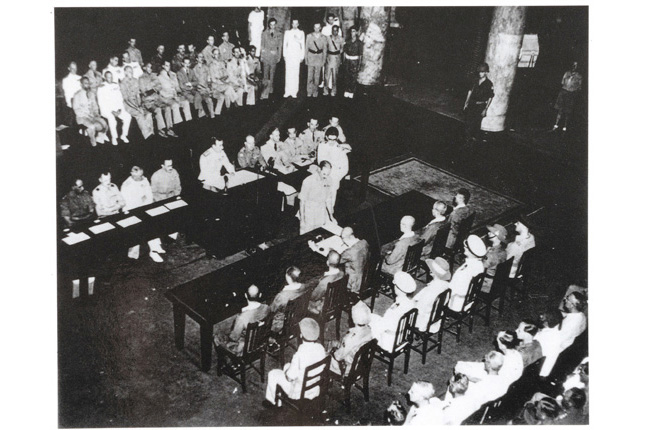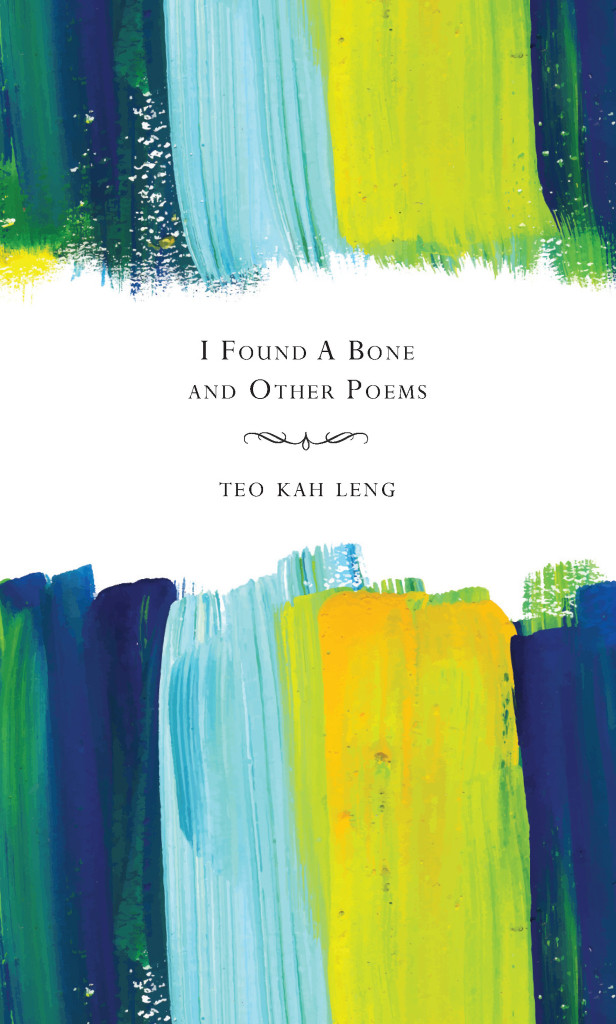“I Found A Bone” – Victory Day
0#Flashback

The Chamber of the Former City Hall was the site of the historic surrender of the Japanese on 12 September 1945. (c.1945. Image from National Museum of Singapore)
“12 September 1945, General Seishiro, along with four other Generals and two Admirals, entered the City Hall Chamber to formally surrender Singapore to Admiral Lord Louis Mountbatten, the British Supreme Allied Commander in Southeast Asia.” From Roots on WW II timeline.
So today marks Victory Day. But the joy and relief must have been short lived as people woke up to victory and at the same time came to grips with the loss and damage wreaked by three and half years of Japanese Occupation; Closer to the bone, came grieving for lives lost and unaccounted for.
Recently, I attended a talk by a researcher – delving into WW II history for next years commemoration of the 75 Anniversary of the fall of Singapore – who shared some memos she came across at the National Archives of Singapore which had sent the “hairs on her arm standing” . They were written by an officer under the British Military Adminstration BMA. The BMA was established in Singapore and Malaya during the period from the Japanese surrender to restoration of civilian rule on 1 April 1946.
The memos noted that reports of those missing during the war lodged by civilians to the BMA in the immediate aftermath of wars’ end, started to show a pattern of Chinese men missing from the dates corresponding to what we now know as Sook Ching. For a period of 3 weeks from 21 February to 4 March 1942, Chinese males between the ages of 18 and 50 were summoned to various mass screening centres and those suspected of being anti-Japanese were executed.
The full scale and nature of Sook Ching was certainly not known during Occupation and only painfully unraveled after the war. But there had been records handwritten and scribbled in secret by individuals of the names of the men who were taken and never returned. Some of these records came to light and later provided evidence needed for the war tribunals which took place a year later in 1946 in Singapore. A portal of the war tribunals held in Singapore launched at the end of August 2016 at the NUS Law Faculty and based on records from the British is an important initiative in documenting WW II history in the region.
In our own research into family history, descendants shared with us their oral records of those in their family who perished in Sook Ching, of which is captured in both our community driven book WW II@ Bukit Brown and also in this blog here and here.
Closer to home, and perhaps most poignant is a first ever record of the Sook Ching execution of two brothers on Punggol Beach documented in a poem by the late father of a family friend. The title of this blog post is taking from the anthology of poems and essays which are published in ” I Found A Bone and Other Poems” by Teo Kah Leng.
I reproduce here excerpts from the title poem:
I found a bone on Punggol Beach
Half buried in the sand,
And bleached by white by the sea and sun –
I picked it up with my hand
It was as brittle and as light
As coral in the sea
It has once an arm like mine
And a hope like me
…….
But then they came a fateful day
To shatter hope and faith
’twas nineteen hundred forty two
February twenty-eighth….
A machine gun sputtered a deadly hate
A bullet whizzed through me,
And I was dragged down by the line
That dropped before the sea
I heard my brother groan and die,
I heard approaching feet,
And Ah! I felt the welcome steel
That stopped my heart to beat
I held the arm bone in my hand
And let my warm tears fall,
My brothers were slain on Punggol Beach
My brothers Peter and Paul
Teo Kah Leng
(1909 -2001)
====================
(Benedict) Teo Kah Leng was an English and Literature teacher who started his teaching career in pre- war Singapore. “Paul” in the poem is his younger brother and “Peter” his older brother. On Teo Kah Leng’s poems, Dr. Eriko Ogihara-Shuck, who co edited the book and who has researched Malayan modernism writing in colonial Singapore, writes:
Kah Leng’s writing style clearly reflects that he was a “teacher – poet” who saw a pedagogical value in the reading and writing of poetry. Like many other English teachers of the 1950s and 60s, he adored poetry as a means of teaching students basics about English skills including pronunciation. He also believed that rhythms and rhymes are primary attractions to both his pupils and an adult audience, and hence poetry is also an effective way of transmitting important values in life.
Values such as compassion and going beyond the call of duty. Teo, was a devout Catholic who taught and served as Principal of Montfort School from 1927 to 1969 . The school was located in a predominantly Teochew enclave, where families were often too poor to send their children to school. His daughter Anne Teo writes of her father in the book:
” My father’s love, care and concern for others extended beyond the family. He would visit parents of students with financial difficulties to persuade them to allow their children to continue studying. He assisted them to seek financial assistance For some weaker students, he would stay back after school to offer them extra coaching in various subjects……..There were times to when he returned home for lunch, hungry as a bear, because he had given his lunch money to poor students who had no money for break time.”
Teo’s “legacy” to his daughter Anne was an anthology of 50 poems, almost all of which has been printed in this book, fulfilling her father’s dream of publishing a book on his poems.
by Catherine Lim, co editor bukitbrown.com


Comments